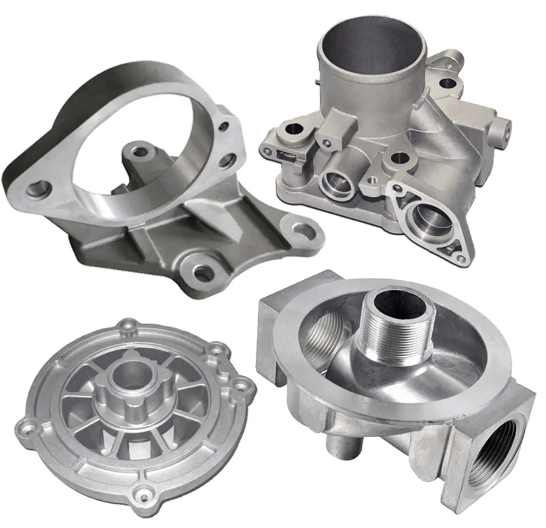Investment Casting for Aerospace Components Applications: Benefits and Advantages
Investment casting is a manufacturing process that has been used for centuries to create intricate metal parts. It involves creating a wax pattern of the desired part, coating it in ceramic, and then melting the wax to leave a hollow ceramic mold. Molten metal is then poured into the mold, creating the final part. This process is particularly well-suited for aerospace applications, where high-quality, complex parts are essential.
One of the key benefits of investment casting for aerospace applications is its ability to create parts with tight tolerances and complex geometries. This is critical in aerospace, where even the smallest imperfection can have catastrophic consequences. Investment casting allows for the creation of parts with intricate shapes and features that would be difficult or impossible to achieve with other manufacturing processes.
Another advantage of investment casting for aerospace applications is its ability to produce parts with excellent surface finish and dimensional accuracy. This is particularly important for parts that need to fit together precisely, such as turbine blades or engine components. The investment casting process can produce parts with a smooth surface finish and tight dimensional tolerances, ensuring that they will function properly and reliably in their intended application.
Overview of Investment Casting
Investment Casting is a manufacturing process used to produce complex and intricate metal parts with high dimensional accuracy and surface finish. It is widely used in the aerospace industry due to its ability to produce parts with complex geometries and thin walls, which are difficult or impossible to achieve using other casting methods.
Process Description
The Investment Casting process involves the following steps:
- Creation of Wax Pattern: A wax pattern of the desired part is created using a mold or a 3D printer.
- Assembly of Wax Patterns: The wax patterns are then assembled onto a wax sprue, which is a central wax rod that connects the patterns to a gating system.
- Investment: The wax assembly is then coated with a ceramic shell by dipping it into a slurry of ceramic particles.
- Dewaxing: The ceramic shell is then heated to remove the wax, leaving behind a cavity in the shape of the desired part.
- Casting: Molten metal is poured into the ceramic shell, filling the cavity and forming the part.
- Finishing: The part is removed from the ceramic shell, and any excess material is removed by cutting, grinding, or machining.
Advantages
Investment Casting has several advantages over other casting methods, including:
- Ability to produce complex geometries and thin walls
- High dimensional accuracy and surface finish
- Low tooling costs compared to other casting methods
- Ability to use a wide range of metals and alloys, including those with high melting points
Disadvantages
Despite its advantages, Investment Casting also has some disadvantages, including:
- Higher cost per part compared to other casting methods
- Longer lead times due to the complex process and multiple steps involved
- Limited part size due to the size of the ceramic shell that can be produced
- Difficulty in producing large quantities of parts due to the time-consuming process
Overall, Investment Casting is a valuable manufacturing process for producing complex and intricate metal parts with high dimensional accuracy and surface finish, making it a popular choice in the aerospace industry.
Investment Casting in Aerospace Applications
Investment casting, also known as lost-wax casting, is a precision casting process that can produce complex, near-net-shape parts with high dimensional accuracy and surface finish. This makes it an ideal manufacturing method for aerospace components, which require high performance, reliability, and safety.
Types of Aerospace Components Produced
Investment casting is used to produce a wide range of aerospace components, such as turbine blades, vanes, nozzles, shrouds, housings, brackets, and more. These components are critical to the performance and efficiency of aircraft engines, gas turbines, rockets, and other aerospace systems.
Materials Used
Investment casting can be used to cast a variety of materials, including superalloys, titanium alloys, aluminum alloys, stainless steels, and more. These materials have high strength, corrosion resistance, heat resistance, and other properties that are essential to aerospace applications.
Quality Control Measures
Investment casting requires strict quality control measures to ensure that the parts meet the required specifications and standards. These measures include:
- Inspection of the wax pattern to ensure that it has the correct dimensions, features, and surface finish.
- Inspection of the ceramic shell to ensure that it has the correct thickness, density, and strength.
- Inspection of the casting to ensure that it has the correct dimensions, features, and properties.
- Non-destructive testing (NDT) to detect any defects or discontinuities in the casting, such as cracks, voids, or inclusions.
- Heat treatment to improve the mechanical properties and microstructure of the casting.
In conclusion, investment casting is a valuable manufacturing method for aerospace applications due to its ability to produce complex, high-performance components with high precision and quality.
Factors to Consider in Investment Casting for Aerospace Applications
Design Considerations
When designing parts for investment casting in aerospace applications, it is important to consider the complexity of the part and the tolerances required. Investment casting can achieve tight tolerances, but it may require additional machining or finishing operations to achieve the desired result. Additionally, designers must consider the materials used in the casting process and their compatibility with the final application.
Cost and Time Considerations
Investment casting can be a cost-effective option for aerospace applications, but it is important to consider the upfront costs of tooling and pattern-making. Additionally, the lead time for investment casting can be longer than other casting methods, so it is important to plan accordingly. However, investment casting can often reduce the need for secondary operations, which can ultimately save time and money in the long run.
Environmental and Safety Considerations
Investment casting can be a more environmentally friendly option compared to other casting methods, as it produces less waste and uses fewer resources. However, it is important to consider the potential hazards of the casting process, such as exposure to high temperatures and chemicals. Proper safety measures must be taken to protect workers and the environment.
Overall, investment casting can be a viable option for aerospace applications, but it is important to carefully consider the design, cost, time, and environmental factors involved. By doing so, designers and manufacturers can ensure that investment casting is the best option for their specific application.
Investment casting enables manufacturers to produce precision-engineered parts while minimizing material and energy waste. The word “investment” refers to the way that wax patterns are invested by a shell to create a vessel, which is then filled with molten metal.
Numerous aerospace components are produced via investment casting. Examples of these include:
- Air and fuel system parts
- Engine parts
- Hydraulic system parts
- Environment control system parts
- Landing control system parts
- Internal mechanical parts
- Interface controls for operators
- Cabin control system parts
Aerospace components must stand up to extreme weather conditions, pressures, and other factors that cause operational wear – thus, these parts require superior inherent durability. The consistency and precision of parts afforded by investment casting result in a significant increase in tensile strength. Creating aerospace parts through investment casting also ensures that interlocking parts can be matched up quickly and easily, preventing assembly errors that could otherwise lead to excessive wear or malfunction.
In this blog, we’ll offer insights into the investment casting process and explore its advantages for aerospace applications.
Key Investment Casting Benefits for Aerospace Components
Investment casting is well-suited for the production of aerospace components for the following reasons:
- Investment casting produces parts with the elaborate designs, thin walls, undercut holes, and slots that aerospace components frequently require.
- Parts made with investment casting will have a superior surface finish, reducing or eliminating the need for secondary machining.
- Investment casting produces parts of different sizes and weights.
Additional Investment Casting Benefits
Investment casting offers an abundance of benefits to those seeking high-quality custom aerospace parts. Not only does the process allow for exceptional quality control during every step of manufacturing, but it also:
- Ensures each part is tested via digital simulations and prototype test runs
- Leads to realized designs capable of operating through both mild and extreme conditions
- Facilitates detailed visual inspection of components
- Creates highly repeatable replicas through standardized procedures
- Forms components that meet all regulatory standards
Investment castings can be created from multiple alloys, resulting in end products that reap the benefits of several metals’ qualities at once. Alloys that are regularly employed within the aerospace industry include:
- Aluminum
- Stainless steels
- Titanium
- Super-alloys
Material selection is critical, as it will impact the unique physical properties that the resulting parts will possess. These properties range from increased chemical and corrosion resistance, durability in the face of extreme temperatures, or other hazardous operating conditions.
Thorough Design Process
Designers rely on various software – such as CAD and CAM – and techniques when starting work on investment casting parts and prototypes. Successfully completing the steps of the initial design phase is critical to a component’s long-term performance. Prototyping, for example, allows designers to stress test parts and determine their operability in real-world settings.
Tight Tolerance Margins
Every measurement allows for some small level of deviation from set specifications, including thickness, diameter, and other related measurements. The more closely that resulting parts can adhere to an application’s measurement requirements, the better they will perform. Investment castings can be made to adhere to very tight tolerance margins, which leads to increased functionality of complex individual parts and complex systems containing multiple parts.
Thin and Streamlined Parts
Investment casting designs can be created to feature thin walls without the risk of losing structural integrity. Examples of these include undercuts, slots, threads, and more. Integrating critical assembly requirements into components is no issue for the investment casting process.
Working with Hengke Metal for Your Investment Casting Needs
At Hengke Metal, we understand the critical importance of fabricating reliable and superior-quality aerospace components. We take pride in crafting world-class investment casting components, using a great range of cutting-edge technology.
The Impro Team can provide you with:
- In-house rapid prototyping capabilities, tooling design & manufacturing to accelerate your time-to-market
- Software simulation process to examine the potential flaws
- Flexible manufacturing setup to accommodate low volumes, high mix
- Engineering and development support from initial collaboration
- In-house material testing, NDT, welding, and heat treatment
- One-stop-shop solution throughout the entire product life cycle
- Worldwide logistics and warehouse facilities and sales offices to reduce the delivery time

